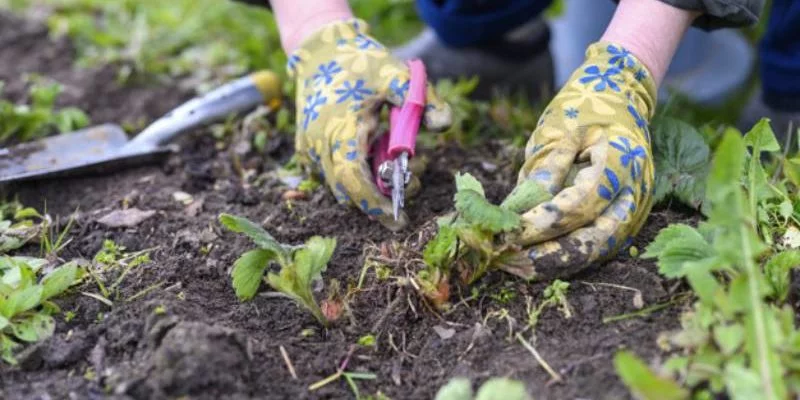- 1376 Church St, San Francisco, CA 94114, USA
- paulhowley14@gmail.com
+(415) 6300 237
Rejuvenate your landscape with Blooms-Gardening’s expert pruning and weeding services. Our skilled team meticulously tends to your plants, ensuring they thrive while eliminating unwanted growth. Rediscover the beauty of a well-groomed garden with us.

When thinking about your plants, you need to do it appropriately to keep away from the danger of harming or causing them to hurt. Here are three hints to endure at the top of the priority list before beginning work in the nursery.
• Weeds contend with garden plants for supplements, light, and water.
• You can keep them from multiplying by introducing ground spread, for example, thyme or Roman chamomile, which will forestall the rise of weeds.
• Hand weeding is the best technique for stopping obtrusive weeds, particularly perennials with rhizomatous root.
• Ripping off the parts over the ground isn’t sufficient: you should uncover the whole root framework.
• Try not to leave weeds that have gone to seed on the fertilizer, or you’ll see that they have come back to your nursery.
On the off chance that weeds are excessively obtrusive, spread the floor with a woven mulching texture that permits air and water to pass. Pruning and Weeding cut it with a blade or scissors. Once set up, spread it with a beautiful mulch (like bark or rock); and secure the fringes with wire. Woven texture is desirable over dark polyethylene sheets, which keep the dirt from relaxing.
Placing the correct plant in the opportune spot isn’t in every case simple: a strong plant, ready to withstand dry spell or make due in unforgiving conditions, may in the long run attack the whole nursery.
Ensure that the plant you mean to develop isn’t viewed as obtrusive. Counsel the staff at your nursery community: they will disclose to you which plants are probably going to be intrusive in your area. Starting with one locale then onto the next, the climatic conditions and soil types aren’t really good for similar plants.
Evacuate the blossoms before seed development; to forestall them being spread in the breeze or by winged creatures. Consistently prune the tips of plants, for example, mint and dispense with them by avoiding potential risk.
On the off chance that in any uncertainty about the intrusiveness of a plant, check with an ecological insurance affiliation or green society. If your nursery is close to farmland, converse with the rancher.
Your trees and shrubs are the most valuable asset on your property. Their beauty gives you a sense of pride in the neighborhood. Don’t let bad aesthetics destroy the garden and lawn that you invested so much energy into and have taken so much time to grow.
At Blooms-Gardening, we set the gold standard for full-service lawn care and lawn care management. Our commitment to excellence shines through as we effortlessly handle all your outdoor needs. With our expert team and dedication to quality, your outdoor space is in capable hands. Experience the best in town and watch your outdoor dreams come to life.
Get quick answers to common questions about our gardening and landscaping services. If you need more information, feel free to contact us for assistance. Your satisfaction is our priority.

We provide a variety of decking materials, including wood, composite, and eco-friendly options. Our experts can help you choose the best material for your project.
The timeline varies depending on the project's complexity and size. Generally, our team works efficiently to complete projects in a timely manner, ensuring quality craftsmanship.
Yes, we offer comprehensive deck maintenance services to keep your outdoor space looking its best. From cleaning to sealing, we've got you covered.
We prioritize sustainability and offer eco-friendly decking materials that reduce environmental impact while providing durability and aesthetics.
Absolutely! We specialize in custom deck designs tailored to your preferences and the unique characteristics of your property. We'll work closely with you to bring your vision to life.
Blooms-Gardening embodies efficiency, eco-consciousness, and unmatched professionalism. Serving San Francisco, the Peninsula, and Marin areas, we are your premier choice for sustainable landscaping services, catering to both residential and commercial clients.